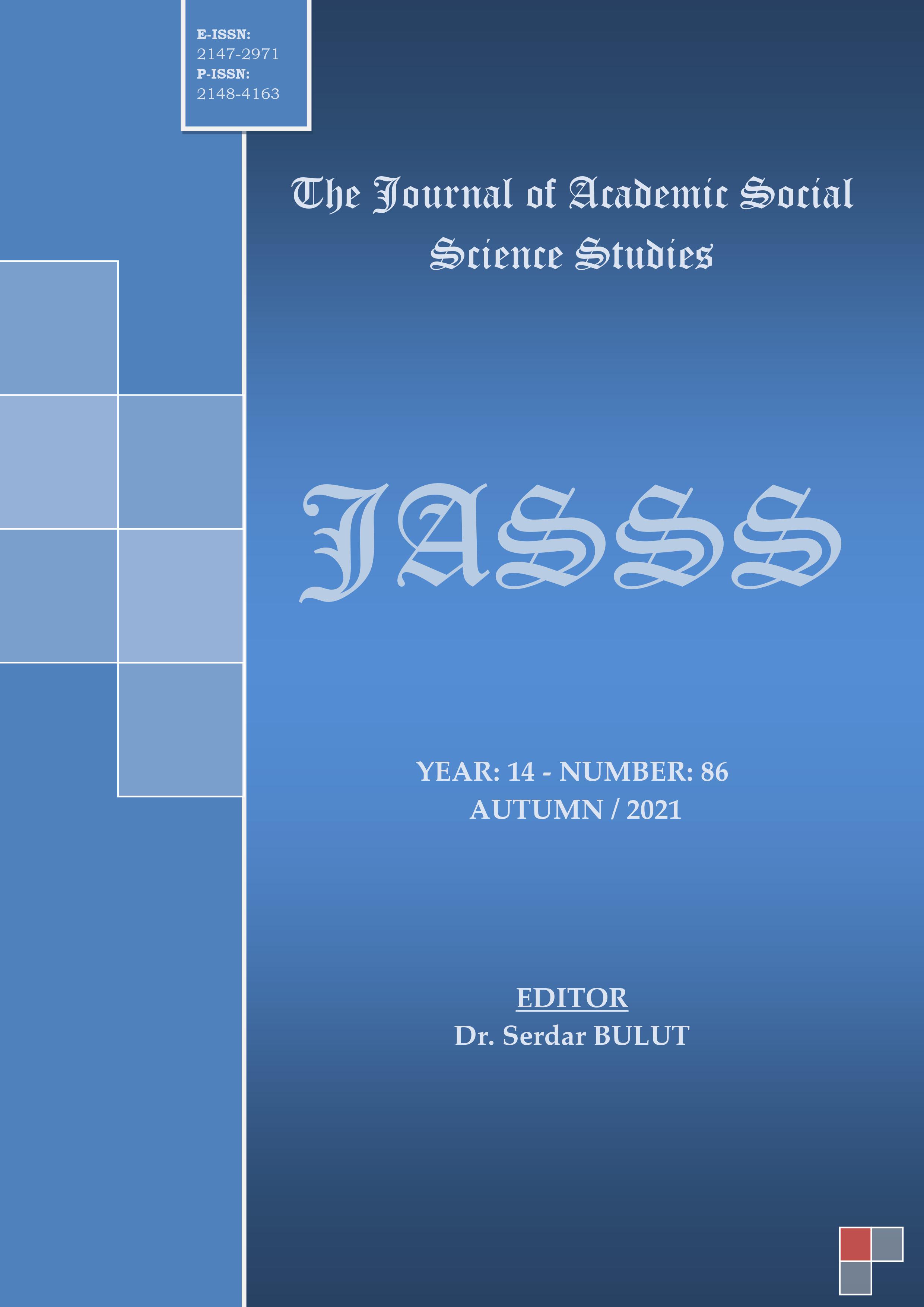Author :
Abstract
Doris Lessing'in çığır açan romanı The Cleft (2007), ekofeminizm bağlamında çevresel meseleleri ele alırken, insan etkisiyle dünyanın jeolojik dönüşümünü ifade eden ve diğer bir adı insan çağı olan Antroposen’e sebebiyet vermiş ilk insan uygarlığının başlangıcını ele almaktadır. Romanda, kadınların çevre dostu yaşam felsefesiyle ilk insanlar olduğu ve erkeklerin daha sonra dünyaya gelerek kadın düzenine davetsiz olarak katıldığı yeni bir toplum türü ile kadın ve erkeklerin farklı yaradılışı tasvir edilmiştir. Kadınlar, erkeklerin aniden ortaya çıkmasına şiddetle karşı çıkarken, erkekler de benzer şekilde şiddete başvurup, öfkeyle onlara karşı çeşitli suçlar işlemişlerdir, ki böylece ilk insan-merkezci toplumun temelleri atılmış olur. Yine de, kadın ve erkekler, sonunda farklılıklarına rağmen uzlaşmaya varıp, kalıcı insan izlerini doğa üzerinde bırakan birlik ve bütünlük içerisindeki ilk insan toplumunu oluştururlar. Hatalarının farkına varan ve onlardan ders alan bu yeni toplum, aslında birbirine bağlı olan insanlık ve doğanın iyiliği için çevre dostu bir hayat sürmeye gayret ederler. Bu çalışma, insan dışındaki doğanın canlılığını ve insan türünün dünyada devam eden oluşum sürecindeki kritik rolünü vurgulayan bir yirmi birinci yüzyıl anlatısı olarak The Cleft romanını incelemeyi amaçlamaktadır. Bu anlamda roman, okuyucunun mevcut yeni dünya gerçekliğinin özü olan Antroposen’i ve antropojen çevresel dönüşümlerinin çıkmazında kendi karmaşık rolünü anlaması açısından değerli bir örnek teşkil etmektedir
Keywords
Abstract
A ground-breaking novel by Doris Lessing, The Cleft (2007) dwells on environmental matters under the context of ecofeminism and depicts the beginnings of the first human civilisation paving the way for the Anthropocene, or in other words, the human age, reflecting the geological transformation of the Earth by human impact. In the novel, a separate creation of men and women is pictured with a new type of society where women are the first humans pursuing an eco-friendly philosophy of life while men come to being later as intruders to the women’s rule. The women object to the abrupt appearance of men violently while men similarly resort to violence and commit several crimes against women in retaliation, which lays the foundations of the first anthropocentric society. However, reconciling despite their differences, the women and the men eventually form the first unified human society leaving their permanent anthropocentric print on nature. Realising their mistakes and learning from them, this budding society endeavours to pursue an environmental-friendly way of life both for humanity and the nonhuman environment, which are indeed interdependent. This study aims to analyse The Cleft as a narrative of the twenty-first century accentuating the vitality of the nonhuman environment and the critical role of human beings in the ongoing process of becoming. In this sense, the novel sets a valuable example for the readers in catching the gist of the new world reality at present, the Anthropocene, and finding their intricate role in the impasse of anthropogenic environmental transformations.
Keywords
- PRIMARY SOURCE Lessing, D. (2007). The Cleft. London: Harper Perennial. SECONDARY SOURCES Barker, P. (2018). The Silence of the Girls: A Novel. London: Penguin. Barad, K. (2003). “Posthumanist Performativity: Towards an Understanding of How Matter Comes to
- Matter” Signs: Women in Culture and Society, Vol. 28, No. 3: 801-831. Barnard, H. (2006). “Nature, Human Nature and Value: A Study in Environmental Philosophy” PhD
- Dissertation. University of Wales, Cardiff. Clarke, D. (2003). Descartes's Theory of Mind. Oxford: Oxford University Press. Cox, J. and Reynolds, L. (1993). New Historical Literary Study: Essays on Reproducing Texts, Representing
- History. Princeton: Princeton University Press. Crutzen, P. J. (2002). “Geology of Mankind: The Anthropocene” Nature, Vol. 415: 23. Çetiner, N. (2020). “Landscapes of the Anthropocene in The Lorax by Dr. Seuss” The Journal of
- International Social Research, Vol. 13, No. 74: 33-41. Davies, J. (2016). The Birth of the Anthropocene. California: The University of California Press. Frankova, M. (2013). “Dystopian Transformations: Post-Cold War Dystopian Writing by Women” Brno
- Studies in English, Vol. 39, No. 1: 212-226. Freire, P. (1970). Pedagogy of the Oppressed. London: Herder and Herder. Gaard, G. (1993). Ecofeminism: Women, Animals, Nature. Philadelphia: Temple University Press. Kaufman, M. (1987). Beyond Patriarchy: Essays by Men on Pleasure, Power, and Change. Oxford: Oxford
- University Press. Lovelock, J. (2006). The Revenge of Gaia. New York: Basic Press. Mikluc, V. (2016). “Feminism of Reconciliation and Social Change: Psychoanalysis, Marxism and Sufism
- in the Works of Doris Lessing” Linguistics and Literature Vol. 14, No 2: 209-219. Plumwood, V. (2002). Environmental Culture: The Ecological Crisis of Reason. London: Routledge. Reno, S. T. (2020). Early Anthropocene Literature in Britain, 1750-1884. London: Palgrave Macmillan. Savenije, H. H. G. et al. (2014). “Evolving water science in the Anthropocene” Hydrology and Earth
- System Sciences, 18. www.hydrol-earth-syst-sci.net/18/319/2014/ doi:10.5194/hess-18-319-2014. Shiva, V. (1994). Staying Alive: Women, Ecology and Development. London: Zed Books. Steffen, W. et al. (2004). Global Change and the Earth System: A Planet under Pressure. Berlin: Springer
- Verlag. --------. (2007). “The Anthropocene: Are Humans Now Overwhelming the Great Forces of Nature”
- Ambio: A Journal of the Human Environment, Vol. 36 No. 8: 614-621. Warren, K. (2000). Ecofeminist Philosophy: A Western Perspective on What It Is and Why It Matters. New
- York: Rowman & Littlefield. Zalasiewicz, J. (2017). “The Extraordinary Strata of the Anthropocene” Environmental Humanities (eds.
